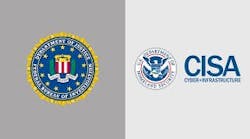PISCATAWAY, New Jersey -- The body count may be fake, but the implications aren't.
With a massive anti-terror drill in both New Jersey and Connecticut nearing its conclusion, U.S. officials were preparing for a thorough review to pinpoint where things went wrong so they can be corrected in the event of a real catastrophe.
''There's no doubt we're going to learn some things from this,'' said Homeland Security Secretary Michael Chertoff, who was in New Jersey on Wednesday for an up-close inspection.
The five-day ''TOPOFF 3'' drill, which began Monday, involves public officials, law enforcement, first responders and hospitals and health care personnel in New Jersey and Connecticut.
The New Jersey portion of the exercise simulates a bioterror attack launched from a sport utility vehicle with a commercial sprayer in Union County. Meanwhile, Connecticut officials were dealing with a simulated chemical weapons attack on the New London waterfront.
Fatigue among hospital workers and the complex logistics of a massive evacuation effort were two areas identified in the early stages of the exercise as potentially problematic, officials said.
As of noon Wednesday, 6,508 ''deaths'' had been recorded statewide as part of the fake outbreak. Planning for the drill was so detailed that ''casualties'' tallied by state officials included 500 cats and rabbits. Authorities arrested five mock terrorists in a simulated raid on a house on Wednesday.
Chertoff, accompanied by acting Gov. Richard J. Codey and Attorney General Peter Harvey, toured a mock antibiotics distribution center set up at the Rutgers University Athletic Center.
At that site, ''victims'' of the fictitious outbreak of pneumonic plague were being screened and given empty packages representing the drugs they would receive to combat the deadly bacteria.
Chertoff would not commit to increasing the money allocated to New Jersey for its homeland security, something that state officials have been pushing. When he was asked whether panic and fatigue -- absent from the drill -- would hamper efforts in a real emergency, Codey stepped in.
''I'm panicked if I don't get extra money,'' the acting governor said.
By Friday morning, all 21 of the state's counties will have drug distribution points set up as part of the drill, said James Langenbach, an official with the state health department.
In Connecticut, authorities simulated a mustard gas attack. They confirmed nearly 200 mock deaths, more than 4,600 supposed injuries and some missing people. Three mock arrests were made based on FBI warrants.

